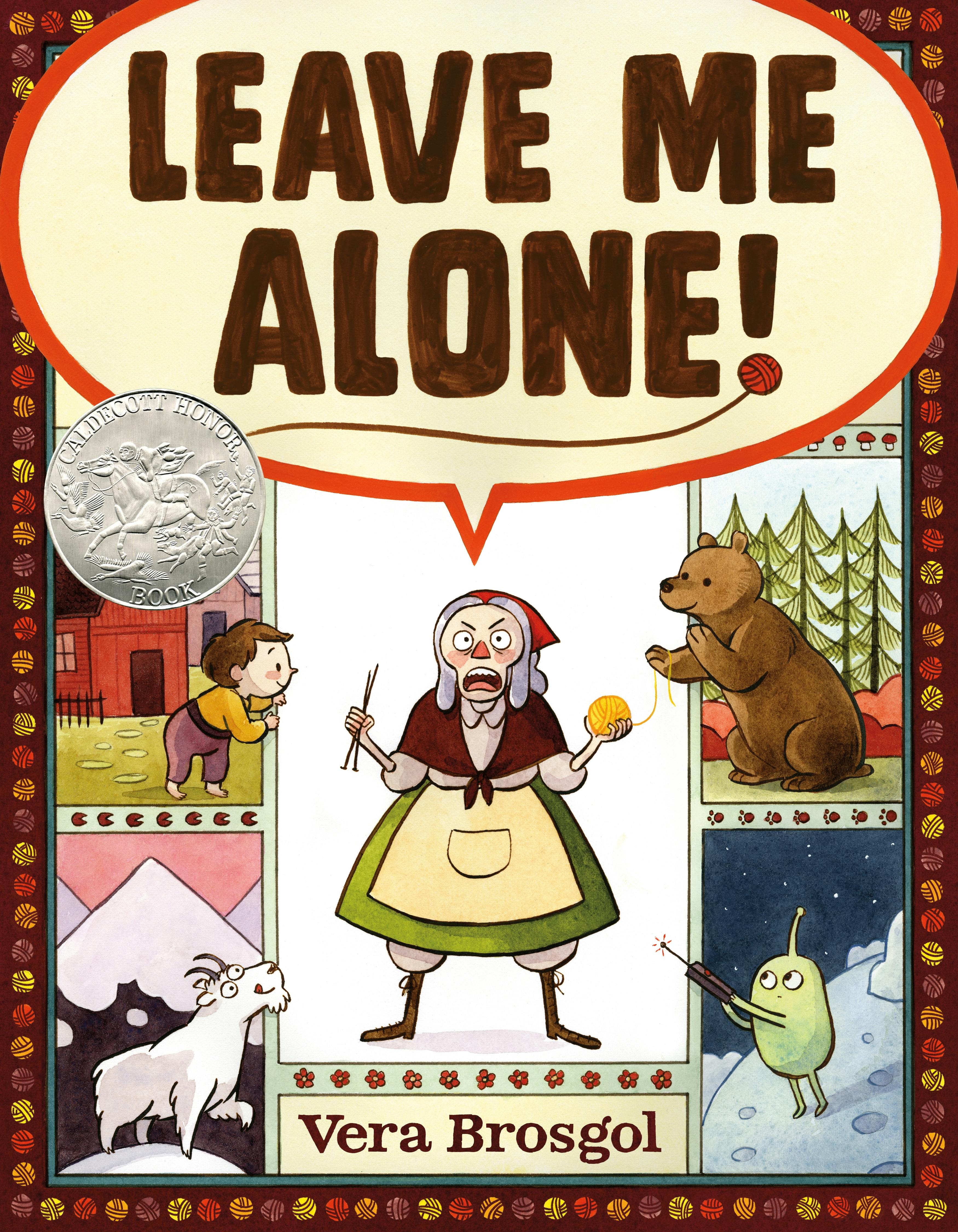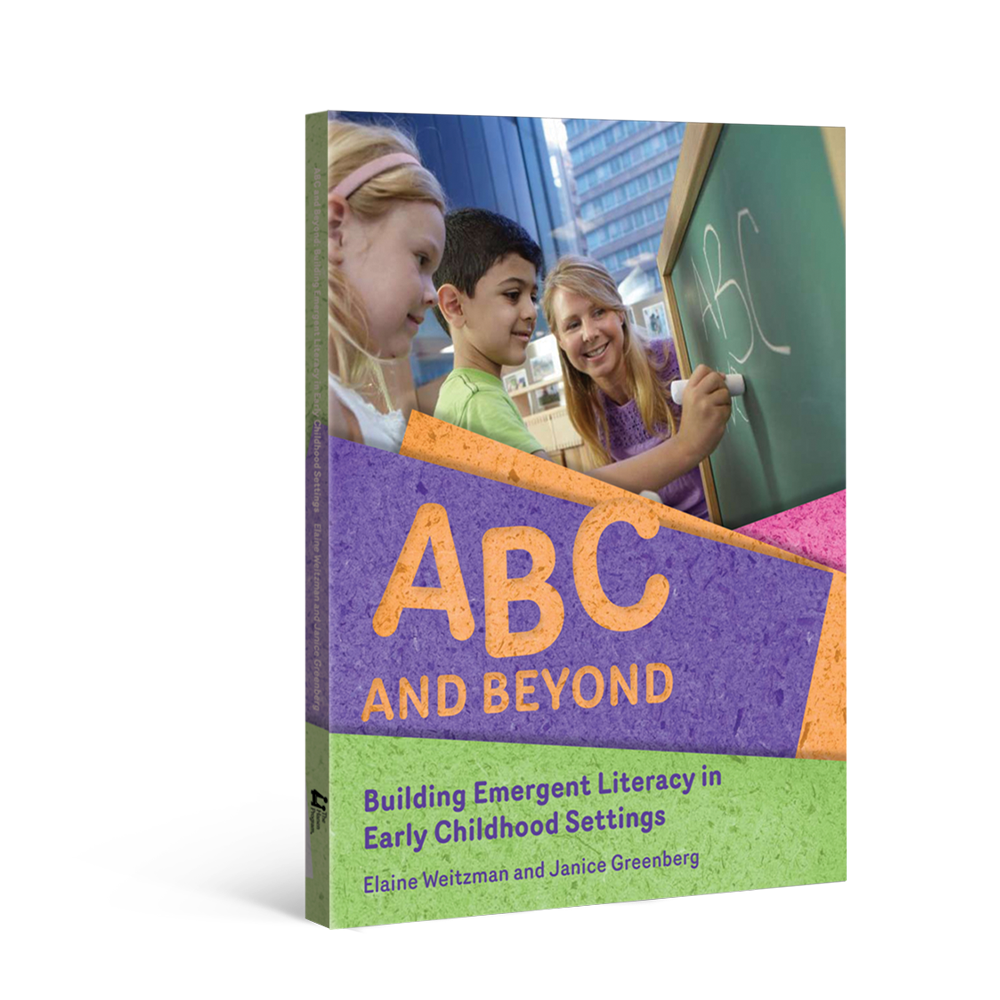This month's Book Nook topic is...
Relating to Children’s Experiences with
Leave Me Alone

Children must use information beyond the words and pictures on the page to build deeper understanding of stories. One of the best ways to help develop this skill is to relate what happens in the book to children’s own experiences and knowledge. Connecting their life to the book encourages children to think deeper about aspects of the story like the characters’ motivations and the actions they take to resolve problems.
The Book:
Leave Me Alone! by Vera Brosgol
Why We Chose This Book
A frustrated grandmother just wants to knit! With 30 rambunctious grandchildren at home, peace and quiet is hard to find. The grandmother searches for some private space, but she is constantly interrupted!
The grandmother’s inability to complete her favourite activity is sure to be relatable to the child, making this a fun book to connect to their own life.
The First Reading
The first time you read a book with a child they are discovering the basic ideas of the story. This means it’s important to keep the story flowing with few interruptions. As you read Leave Me Alone together for the first time, you may choose to have very short conversations that help the child remember who the main character is, the problem she encounters, and the actions she takes to resolve that problem. You could say:
- “The grandmother is the main character of this story,”
- “The grandmother has a problem. She can’t do what she wants to do because she keeps getting interrupted,” or,
- “She tries to solve the problem by wandering further and further away from home.”
Later Readings: How to Relate the Story to Your Child’s Knowledge and Experiences
Once a child is familiar with Leave Me Alone, there are two main strategies you can use to relate to their experiences when you re-read the book: making thinking-out-loud comments and asking questions that build understanding.

Making thinking-out-loud comments
Thinking-out-loud comments give the child a model of how we reflect on parts of a story that are not directly explained in the text or shown in the pictures. When you make thinking-out-loud comments about experiences, it helps the child connect the story to their life. As you read, you can make thinking-out-loud comments without placing pressure on the child to respond using phrases like:
- “I’m wondering…..” or,
- “I’m thinking about….”
In Leave Me Alone, the author uses the abstract language “at the end of her rope” to explain why the grandmother first leaves her home. You can help the child understand what this means by relating to their own experiences. For example, you could say, “The grandmother is pretty upset, like you were when you wanted to finish your puzzle and kept getting interrupted. You were at the end of your rope – just like the grandmother!”
Later in the story, the grandmother sits alone in the dark looking lonely. To help the child understand how the grandmother feels, you could say, “I’m wondering if she is starting to miss everyone and feel lonely. Sometimes when you play by yourself, you get lonely.”
After you make a thinking-out-loud comment, wait to see how the child responds. Keeping the conversation going about their experiences will help the child build a deeper understanding of the story.

Asking questions that build deeper understanding
Questions that build understanding ask the child to look for meaning beyond what is written on the page. If a child shows interest in a particular part of the book, you can ask a question that connects what’s happening at that moment with something they have experienced. Here are some examples of questions that build deeper understanding.
- When the grandmother yells at the family of bears who interrupt her, you could say, “She is getting so frustrated. Have you ever yelled when someone is bothering you?
- When the mountain goats are playing with the grandmother’s balls of yarn, you could say, “Uh oh, the goats are excited to play with the yarn but that’s not a toy! Have you ever played with something that’s not a toy?”
- When the grandmother returns home, you could say, “The grandmother is ready to play with all her grandchildren when she finally comes back. What do you like to do when you get home?”
It’s important to give the child time to think about your question. Remember to wait for the child to respond. If the child does not respond to your question after about 10 seconds, you can add a thinking-out-loud comment to provide an example of how to respond.
Keep The Conversation Going
Children love to read the same books over and over again. This means you can use Leave Me Alone to keep conversations going during shared book reading by continuing to make more comments or ask new questions each time you read. You can also come back to the same ideas after you finish reading the book so that children get more practice relating what they discussed in the story to their everyday life.
Happy reading!
More Resources
The strategies in this Book Nook post are drawn from Hanen’s practical, research-based guidebooks for building emergent literacy. Explore the links below to learn more about how these guidebooks can support you.
For Parents I'm Ready! guidebook
I'm Ready! guidebook
For Educators ABC and Beyond guidebook
ABC and Beyond guidebook
